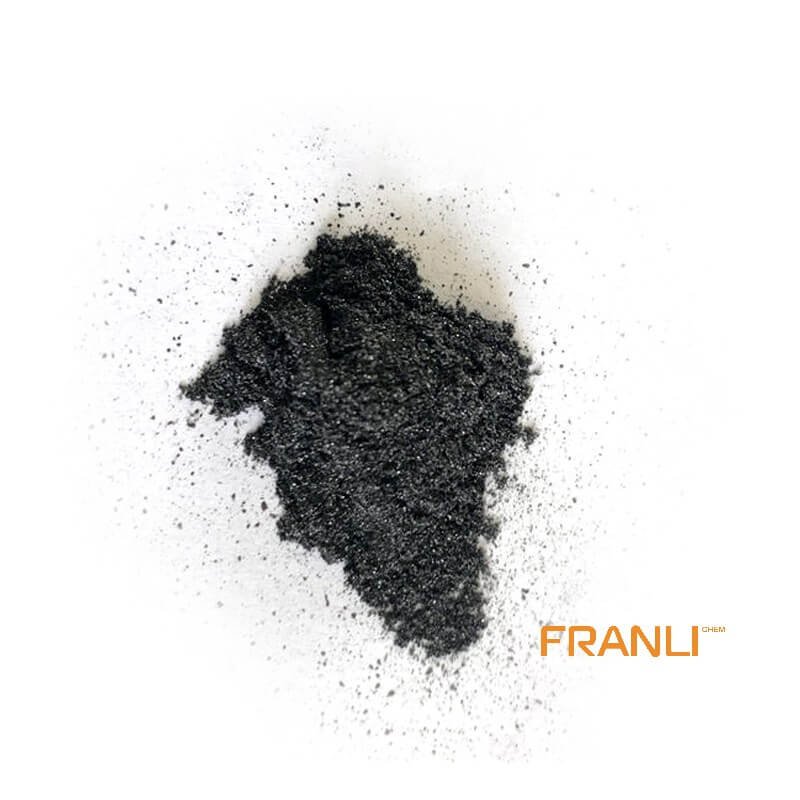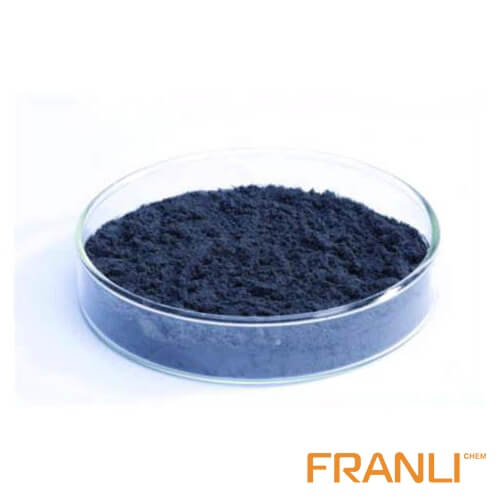


Expandable Graphite
Size
0.50mm or 0.106mm, etc
Package
25 kg small bags into ton bags
Origin
China
Features
Preservative/Electrical and thermal conductivity, etc.
Application
Fireproof sealing element, flame retardant, refractory brick, etc.
Expandable graphite crystal is a typical layered carbon material. Other heterogeneous particles such as atoms, molecules, ions, and even atomic clusters are inserted into the interlayer of crystalline graphite by physical or chemical methods to form a new layered compound, which is called graphite interlayer compound, namely expandable graphite.
Request a quote
The production process of expandable graphite is to mix hydrogen peroxide with concentrated sulfuric acid to form a strong oxidation environment; The free π bond with the graphite layer forms the electrode potential difference, which makes the graphite layer be pulled apart, while the H2SO4 in the sulfuric acid mixture enters the layer in the form of ion clusters and remains in the mode of weakening bond to form a graphite intercalation compound.
The ion group of H2SO4 retained in the graphite layer will decompose instantaneously when subjected to high temperatures. While escaping from the graphite layer, a large amount of heat will make the graphite pull away from the longitudinal direction and form a worm shape. Because it has such characteristics, it is called expandable graphit

The expandable graphite with an annual output of 30000 tons takes the high-purity graphite products in the high-purity graphite production workshop as the raw material. Its process only includes intercalation reaction to form graphite interlayer compounds, which can expand graphite, excluding the expansion process.
(1) Sulfuric acid intercalation
The intercalation reaction equation of graphite sulfate interlayer compound is as follows:
nC+nH2SO4+n/2•[O]→n[C-HSO4]n+n/2H2O
The process of sulfuric acid intercalation into graphite layers mainly includes three steps: oxidation, intercalation, and structural transformation.
The role of oxidation lies in the carbon atoms on the graphite oxide layer, which makes the carbon atoms on the layer positively charged. Due to the electrostatic repulsion, the spacing between the graphite layers is increased to facilitate the entry of sulfuric acid;
The insertion process is mainly a diffusion process;
After sulfuric acid enters the interlayer, the structure of graphite will change. When the structural transformation is completed, the intercalation reaction solution will end.
(2) Deacidification
98% concentrated sulfuric acid and 60% hydrogen peroxide are measured, pumped into the reaction tank, and started to mix. The graphite raw material package is placed above the feeding port through mechanical hoisting, and the graphite powder in the package is transported into the graphite powder silo through pneumatic conveying, and then put into the reaction tank through the metering tank. Graphite reacts with the acid in the reaction tank at room temperature for 48h. After the reaction, the acid is removed by vacuum filtration, and the removed acid is pumped into the acid recovery tank for reuse when feeding next time.

(3) Neutralization, dehydration, and drying
The graphite solid material after deacidification is washed to neutral, and the washing wastewater is discharged into the plant wastewater treatment station for treatment. The filter cake is sent to the dryer, heated indirectly by steam, and dried at a low temperature of 50 ℃ to obtain expandable graphite. The graphite dust in the drying process is captured by the filter element dust collector, and the purified waste gas is discharged.
(4) Screening, impurity removal, and packaging
The dried graphite shall be screened for slag removal, and the slag with unqualified particle size shall be removed. The qualified graphite products shall be packaged and put into storage.
The dust in the screening process is discharged after being purified by the filter element type dust collector. The screening slag is discharged into the tailings pond of the concentrator.
Excess sulfuric acid is required in the production process of expandable graphite, so the wastewater produced in the production process is acidic; Graphite drying process will produce a certain amount of graphite dust, which can be recycled; Waste residue and dust will be produced during screening and slag removal.



